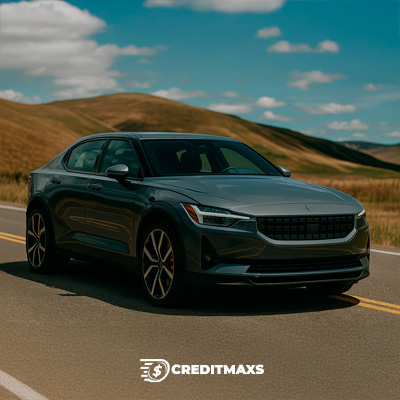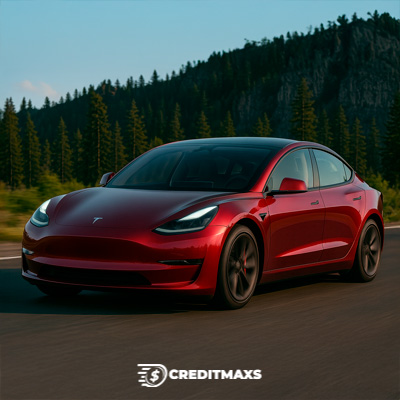Polestar 2 vs Tesla Model 3: Which Electric Sedan Is the Smartest Buy in 2025?
As the electric vehicle market continues to evolve rapidly, the Polestar 2 vs Tesla Model 3 debate has become one of the most relevant comparisons for EV buyers in 2025.
Both models represent the pinnacle of compact electric sedans, offering forward-thinking design, advanced technology, and sustainable performance.
While the Tesla Model 3 has dominated the segment for years with its minimalist aesthetic and cutting-edge software, the Polestar 2 brings a Scandinavian approach backed by Volvo’s safety legacy and Google’s tech ecosystem.
This article breaks down every key aspect to help you decide which EV is the smarter buy this year.
Polestar 2 vs Tesla Model 3: Performance, Range, and Charging Speed ⚡
Powertrain Options and Driving Dynamics
Both sedans offer rear-wheel-drive (RWD) and dual-motor all-wheel-drive (AWD) configurations, but they cater to different driving experiences.
- Polestar 2 comes in three main variants: Standard Range Single Motor (RWD), Long Range Single Motor (RWD), and Long Range Dual Motor (AWD). The dual-motor version produces up to 455 hp (with Performance Pack) and delivers confident handling with a more grounded, European feel.
- Tesla Model 3 now includes the RWD base model, the Long Range AWD version, and the high-performance Model 3 Performance trim. The Performance model boasts up to 510 hp, incredibly quick 0–60 times (as low as 2.9 seconds), and a more agile, sportier drive.
Battery Range and Real-World Efficiency
- Tesla Model 3 Long Range AWD offers an estimated 358 miles of EPA range, and thanks to Tesla’s excellent energy management system, real-world range typically aligns closely. The RWD version offers around 272 miles.
- Polestar 2 Long Range Single Motor reaches 320 miles per EPA estimates, but real-world usage varies depending on driving habits and climate. It’s generally slightly less efficient than the Model 3, especially in colder regions.
Charging Infrastructure and Time
- Tesla benefits from its exclusive Supercharger Network, offering up to 250 kW speeds and seamless plug-and-charge convenience. Charging from 10% to 80% can take about 25 minutes.
- Polestar 2, using CCS charging, supports up to 205 kW (in newer models) and can charge 10–80% in roughly 28–30 minutes. It relies on third-party networks like Electrify America, ChargePoint, and EVgo.
Interior, Technology, and User Experience 🌐
Cabin Design and Materials
- Polestar 2 features a warm, driver-centric cabin made with premium and environmentally friendly materials. Its Scandinavian-inspired design blends natural finishes, a classic interior layout, and strong sound insulation for a refined experience.

- Tesla Model 3 goes all-in on minimalism, with an ultra-sleek dashboard devoid of buttons and a single 15-inch screen. While futuristic, some drivers find it too spartan or lacking tactile feedback.

Infotainment Systems and Controls
- Polestar 2 uses Google’s Android Automotive OS natively, featuring Google Maps, Assistant, and the Play Store. It also supports Apple CarPlay. The system is intuitive and regularly updated over the air.
- Tesla Model 3 uses Tesla’s proprietary OS, known for lightning-fast responsiveness and deep integration with vehicle functions. However, it lacks native support for Apple CarPlay or Android Auto.
Safety Features and Autonomous Tech
- Polestar 2 includes Volvo’s signature safety tech like Pilot Assist, lane-keeping aid, adaptive cruise, and excellent crash ratings. It also supports OTA updates for future driver-assist improvements.
- Tesla Model 3 offers basic Autopilot in all trims, with optional Full Self-Driving (FSD) for an additional cost. Tesla’s system is more ambitious but can be inconsistent depending on region and version.
Tesla Model 3 or Polestar 2: What Buyers Should Know Before Deciding 🔎
- Base price: Model 3 RWD starts around $39,990; Polestar 2 RWD starts around $49,900
- Standard features: Tesla includes Autopilot, a heat pump, and premium audio; Polestar adds Google integration and high-quality interior materials
- Ownership experience: Tesla stands out for its advanced mobile app features and seamless over-the-air updates; Polestar benefits from a well-established service network supported by Volvo.
- Brand image: Tesla is seen as tech-forward and innovative; Polestar leans into luxury, design, and safety
- Resale value: Tesla vehicles are known for maintaining solid market value over time; Polestar, while a newer player, is steadily building its reputation in the used EV market.
Top 3 Financing Options for Tesla Models in the U.S. 📝
Tesla Financing
Tesla offers direct online financing with real-time approvals, no dealer markups, and instant integration into the car-buying process.
It’s one of the fastest and most convenient ways to secure a loan tailored specifically for Tesla buyers.
Credit Unions
Credit unions like NASA Federal and Consumers Credit Union offer some of the lowest EV rates available, and may work with federal rebates directly.
They’re known for customer-friendly policies, making them a strong alternative to traditional banks.
Major Banks
Banks like Bank of America and LightStream offer flexible EV loans with pre-approval tools and the option to finance without a down payment for eligible buyers. These institutions often provide longer terms and digital platforms for easy loan management.
How to Finance Your Polestar in the U.S.: 3 Trusted Lenders 📝
Polestar Financial Services
Backed by Volvo, this platform offers lease and loan plans, seasonal APR discounts, and tailored EV programs for Polestar buyers. It’s the most streamlined option, with offers that align closely with Polestar promotions and incentives.
Credit Unions
Institutions like PenFed and Golden 1 provide EV-focused loans with lower interest rates and flexible term lengths, ideal for eco-conscious borrowers. Many also offer special perks for clean vehicle financing, including reduced rates or cashback incentives.
Large U.S. Banks
Banks like Chase and Capital One provide EV loan products with incentives, digital management tools, and rewards for green purchases.
Their wide network and easy online application process make them a convenient choice for many Polestar shoppers.
Technical Specifications 📋
| Feature | Tesla Model 3 Long Range | Polestar 2 Dual Motor |
|---|---|---|
| Power (hp) | 384 hp | 455 hp (w/ Performance Pack) |
| Torque (lb-ft) | 376 lb-ft | 546 lb-ft |
| 0–60 mph | 4.2 seconds | 4.1 seconds |
| EPA Range | 358 miles | 320 miles |
| Max Charging Speed | 250 kW (Supercharger) | 205 kW (CCS) |
| Charging 10–80% | 25 min | 28–30 min |
Which EV Comes Out Ahead in 2025, Polestar 2 vs Tesla Model 3? 🤔
Choosing between the Polestar 2 vs Tesla Model 3 in 2025 boils down to your priorities. If you value cutting-edge software, charging convenience, and performance, the Tesla Model 3 remains hard to beat.
However, if refined design, safety, interior quality, and Google-native tech appeal more, the Polestar 2 is a compelling alternative.
Both are excellent choices, but for those seeking a more human-centered, luxury-focused EV with solid range and safety, the Polestar 2 might be the smartest buy in 2025.
❓ Frequently Asked Questions
1. Is the Polestar 2 more reliable than the Tesla Model 3?
- Polestar benefits from Volvo’s engineering legacy, while Tesla has made strides in reliability. Both offer OTA updates, but Polestar leans more on proven build quality.
2. Which car is better for long road trips?
- Tesla wins here due to its exclusive Supercharger network, greater range efficiency, and seamless navigation.
3. Does Polestar support Apple CarPlay or Android Auto?
- Yes, the Polestar 2 supports Apple CarPlay and runs Android Automotive natively, giving it excellent smartphone integration.